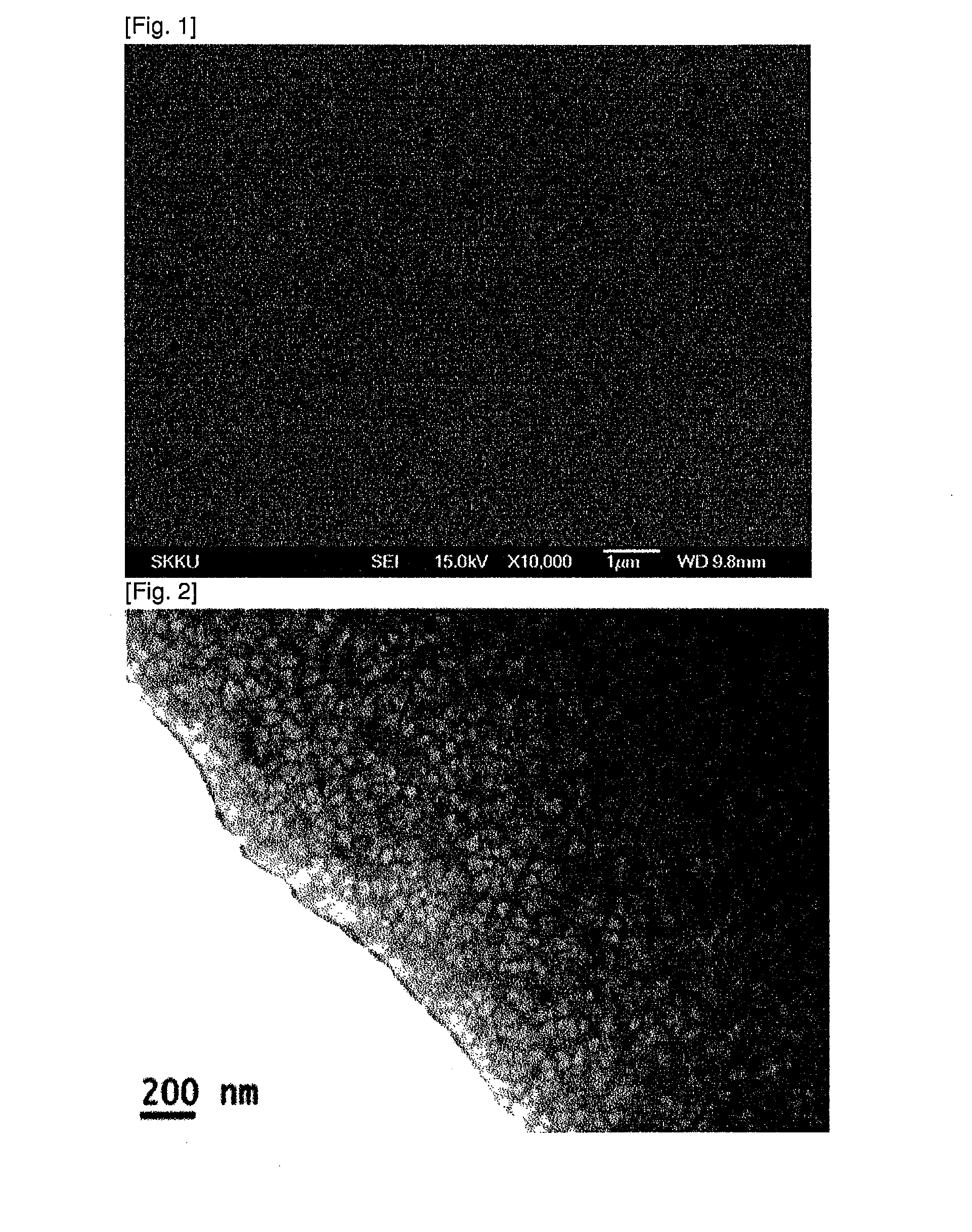Negative electrode active material
a negative electrode active material and active material technology, applied in the manufacture of final products, cell components, conductors, etc., can solve the problems of increasing power consumption with multifunctionality, difficult to achieve a high charge/discharge capacity, and expansion of the volume of silicon (si) , to achieve excellent initial efficiency of a secondary battery and excellent cycle and efficiency properties
- Summary
- Abstract
- Description
- Claims
- Application Information
AI Technical Summary
Benefits of technology
Problems solved by technology
Method used
Image
Examples
example 1
[0083]Silicon (Si), titanium (Ti) and iron (Fe) were mixed (Si:Ti:Fe=67%:16.5%:16.5%), and the resulting mixture was melted under argon gas using an arc melting method to prepare a Si—Ti—Fe crystalline alloy. The prepared alloy was subjected to a quenching method such as melt spinning, thereby preparing a negative electrode active material in which active silicon (Si) particles (phase A) were disposed in the Si—Ti—Fe alloy matrix (phase B) in a band shape. In the melt spinning method, the quenching rate (a rate of rotation of a kappa roll) was approximately 3,500 rpm.
example 2
[0084]A negative electrode active material was prepared in the same manner as in Example 1, except that the mixing ratio (Si:Ti:Fe) was altered to 70%:15%:15%.
example 3
[0085]A negative electrode active material was prepared in the same manner as in Example 1, except that the mixing ratio (Si:Ti:Fe) was altered to 74%:13%:13%.
PUM
| Property | Measurement | Unit |
|---|---|---|
| particle diameter | aaaaa | aaaaa |
| electric conductivity | aaaaa | aaaaa |
| thickness | aaaaa | aaaaa |
Abstract
Description
Claims
Application Information
 Login to View More
Login to View More - R&D
- Intellectual Property
- Life Sciences
- Materials
- Tech Scout
- Unparalleled Data Quality
- Higher Quality Content
- 60% Fewer Hallucinations
Browse by: Latest US Patents, China's latest patents, Technical Efficacy Thesaurus, Application Domain, Technology Topic, Popular Technical Reports.
© 2025 PatSnap. All rights reserved.Legal|Privacy policy|Modern Slavery Act Transparency Statement|Sitemap|About US| Contact US: help@patsnap.com



